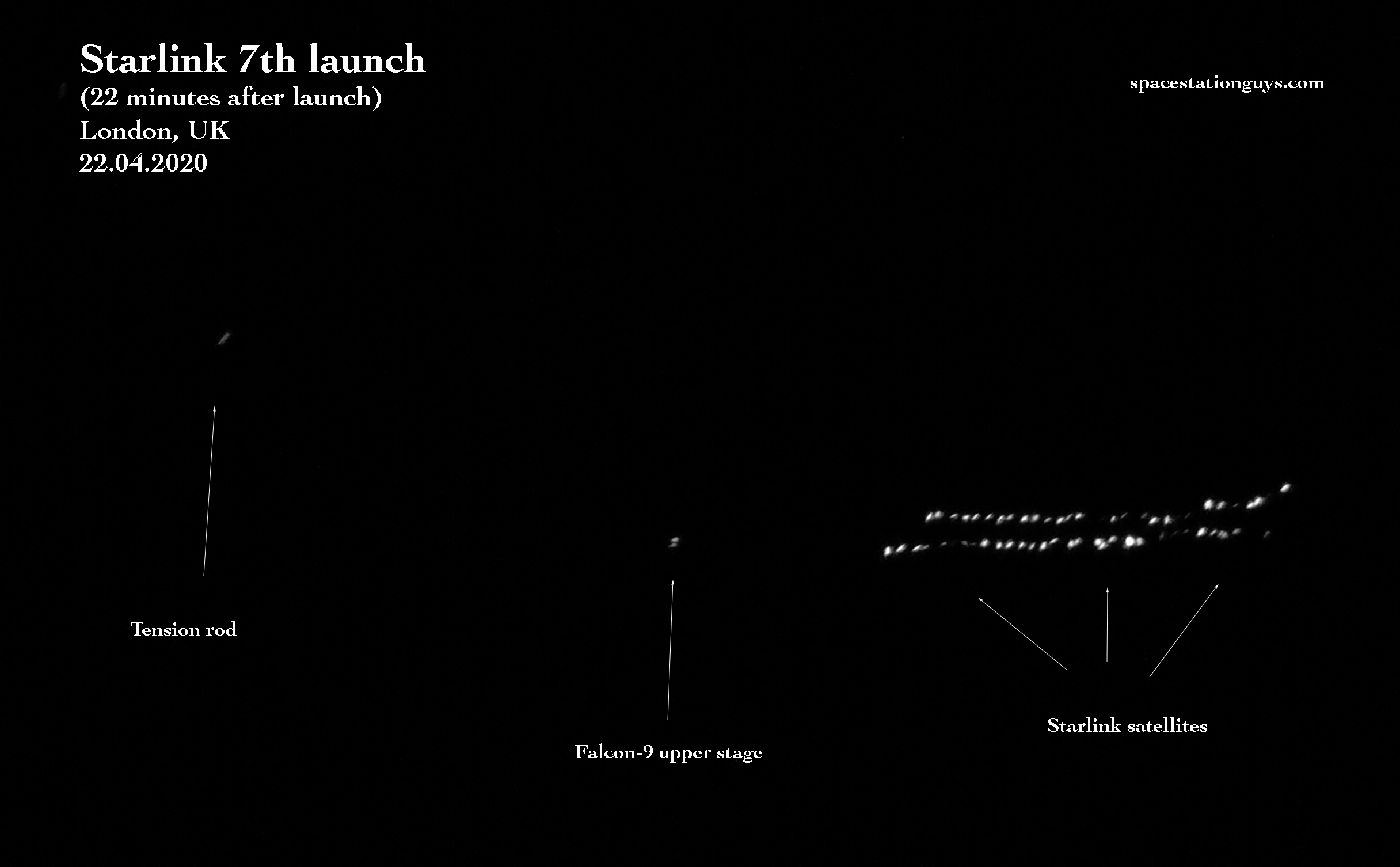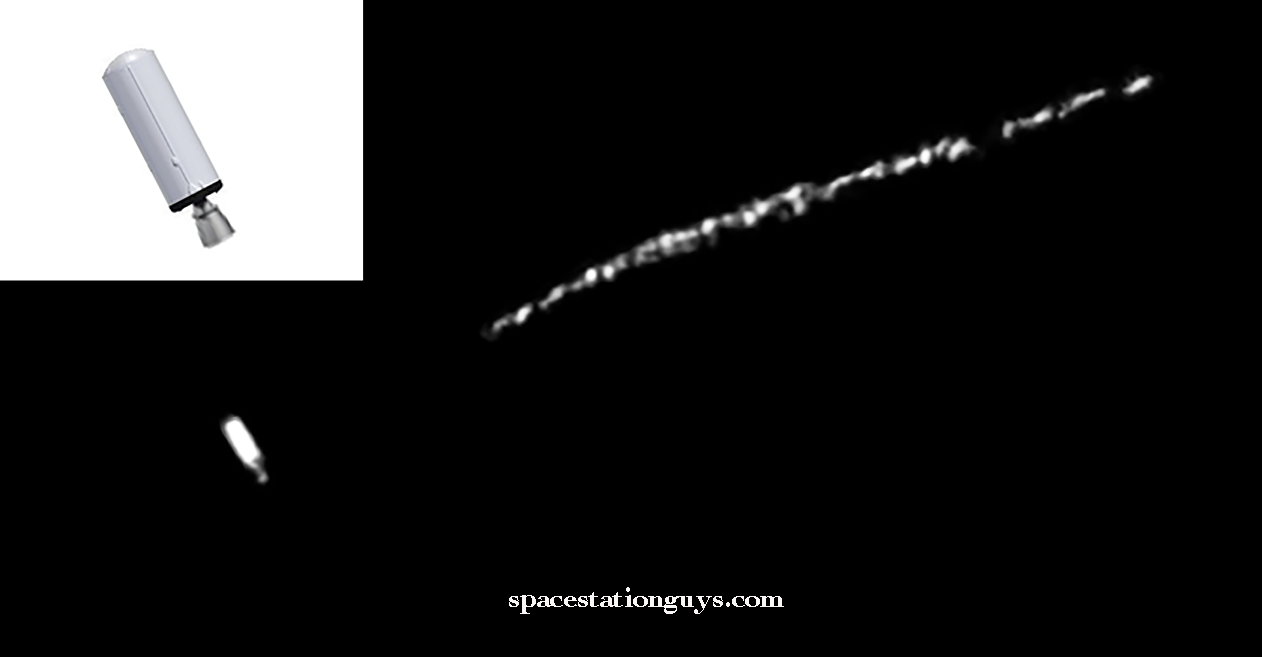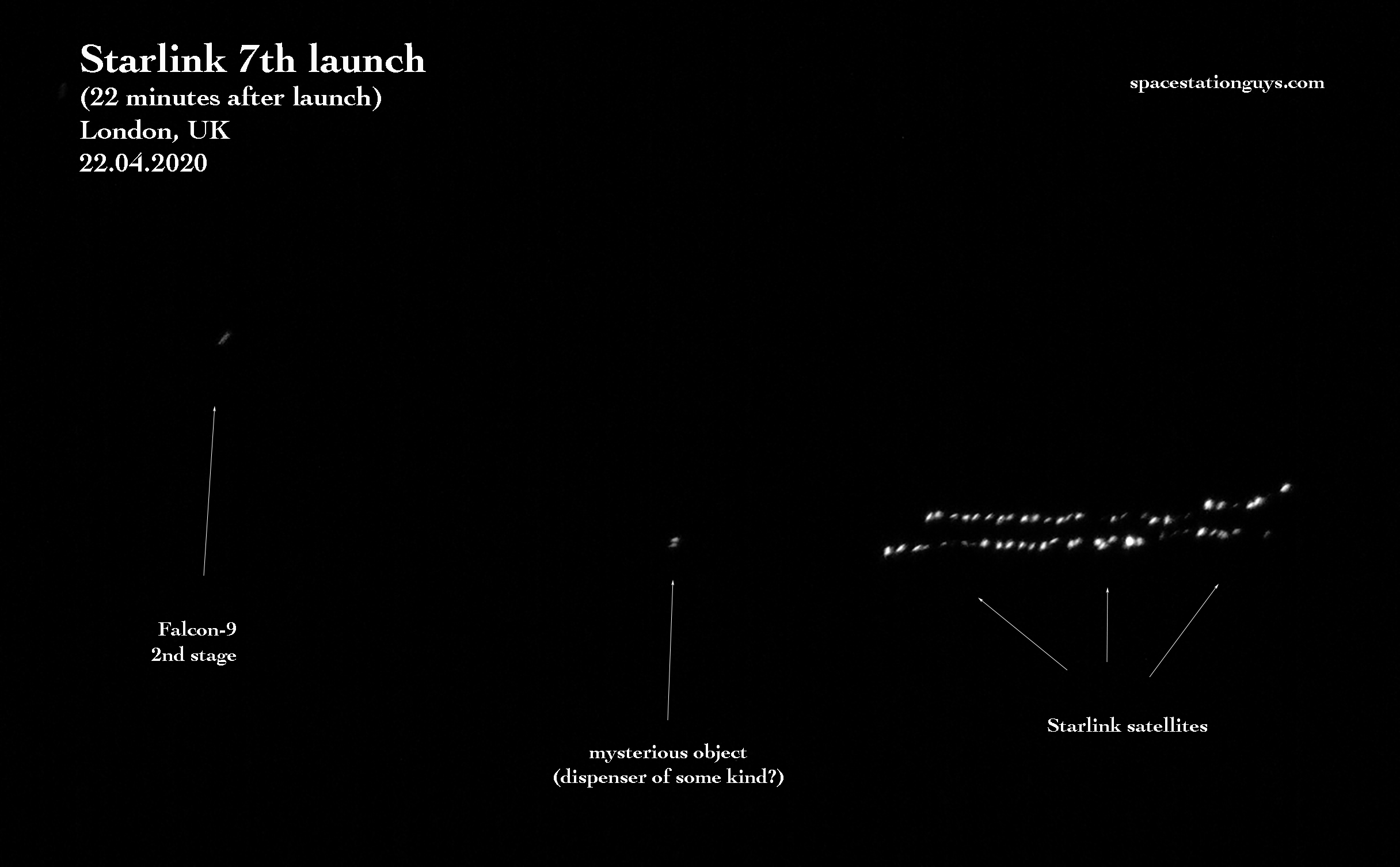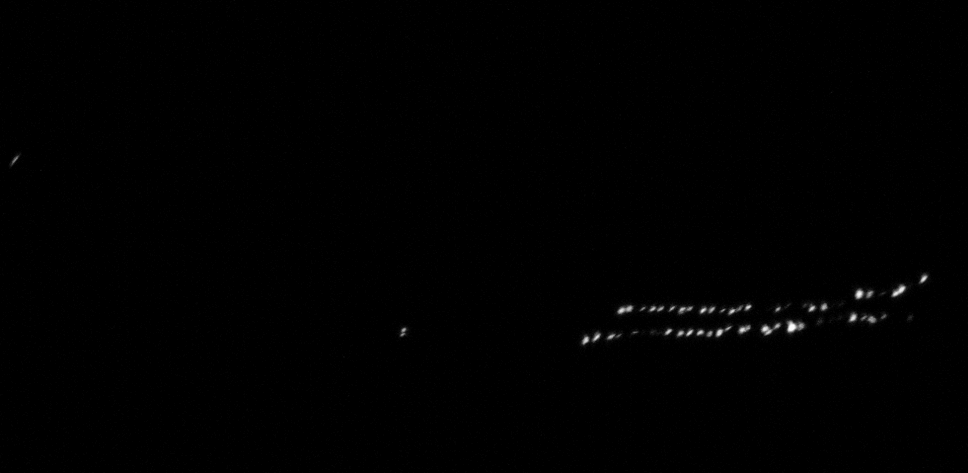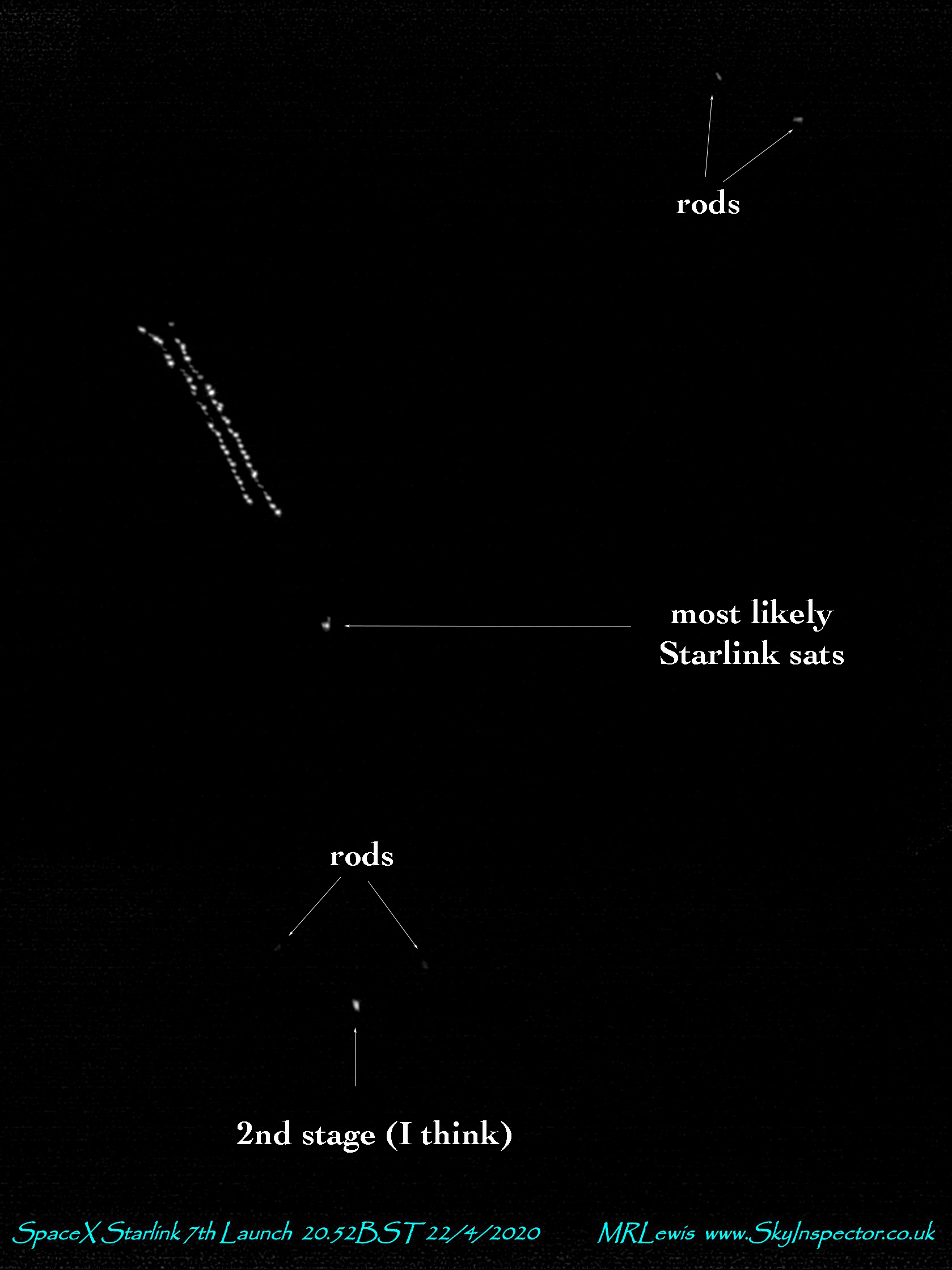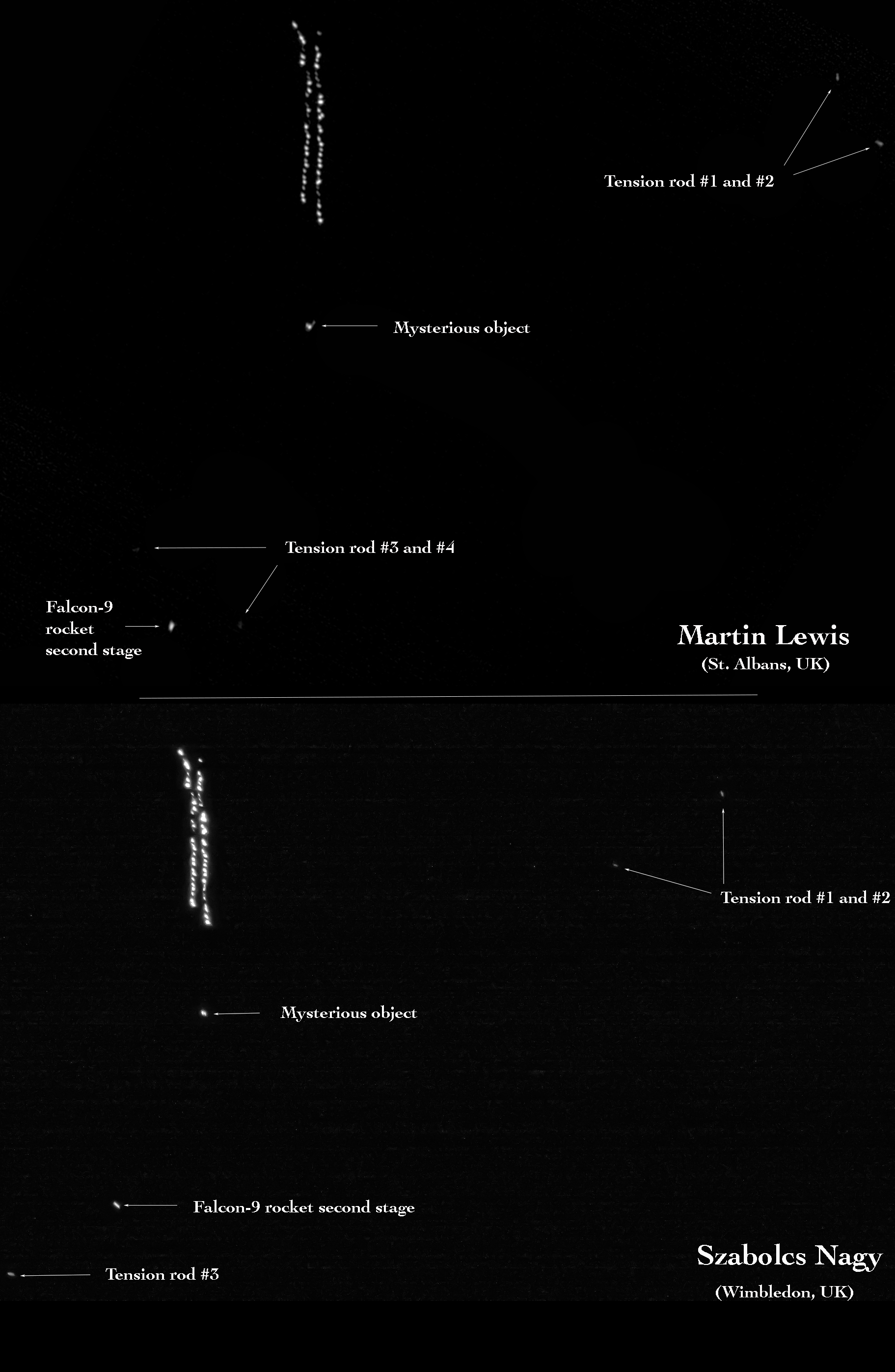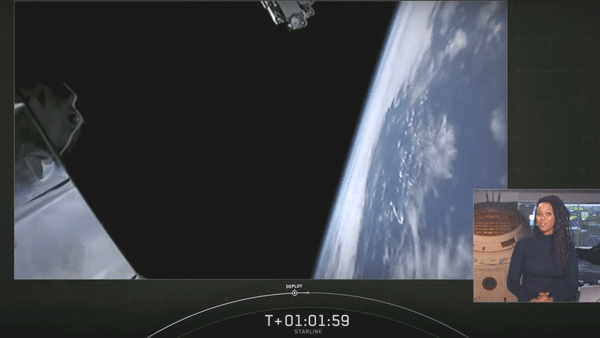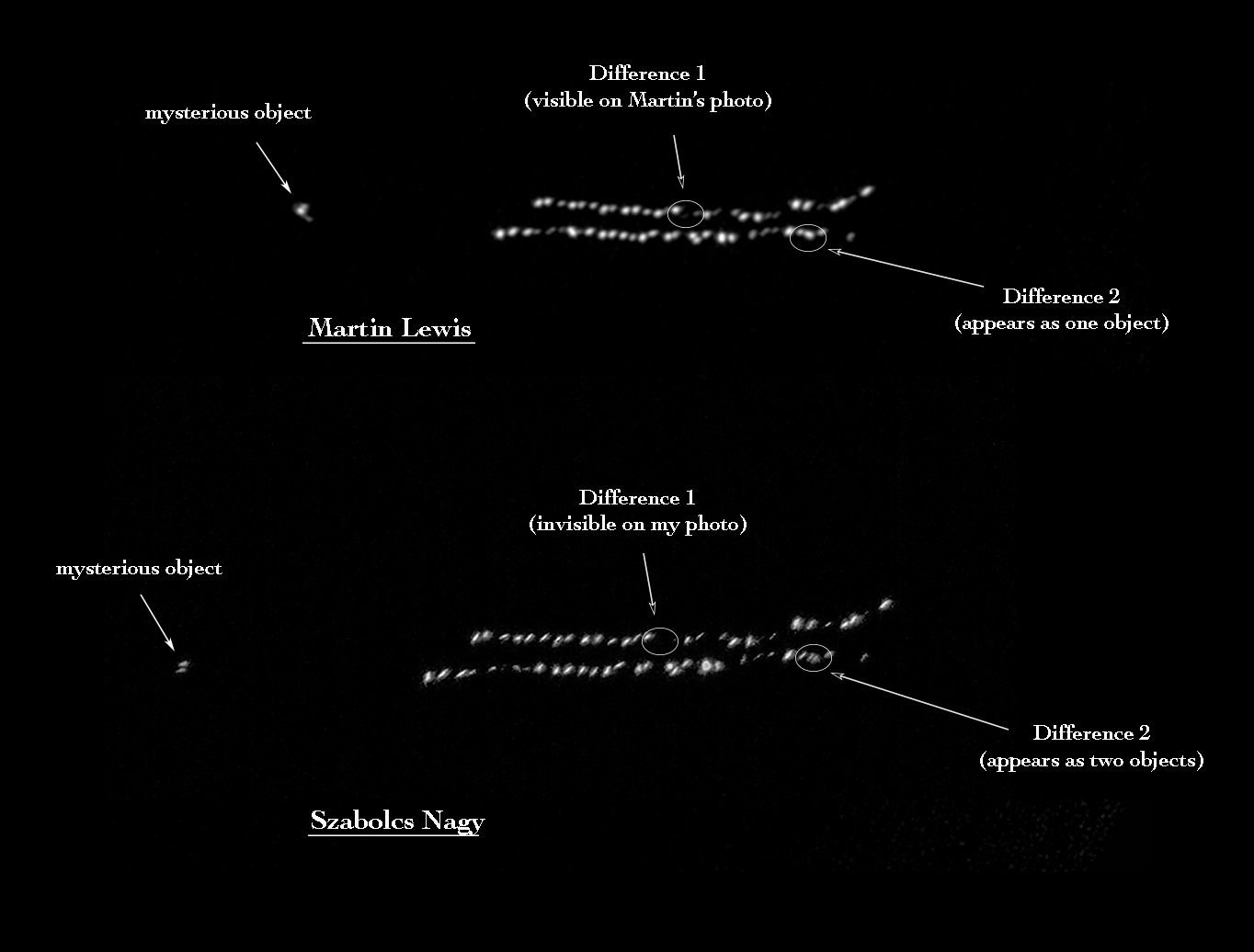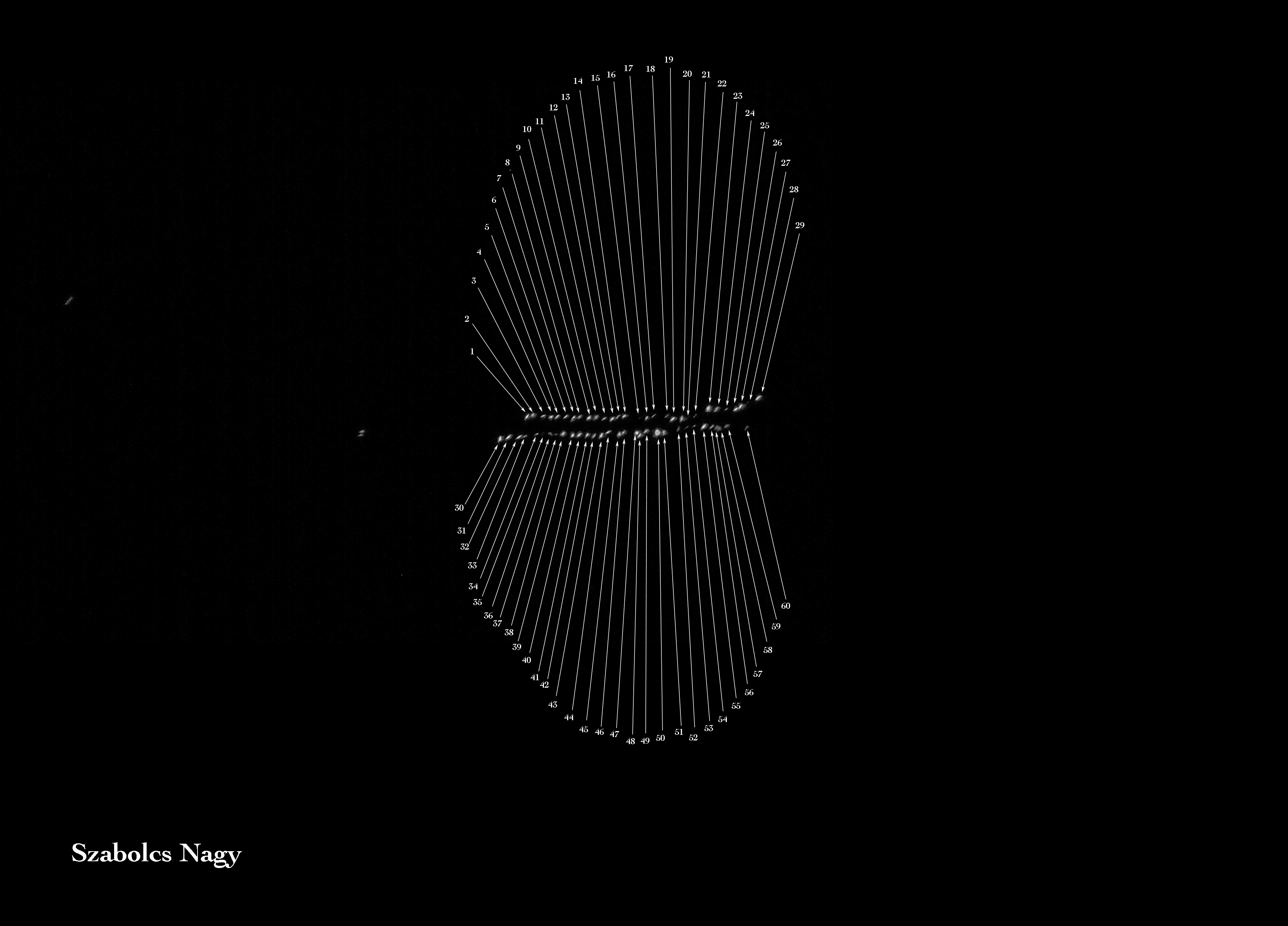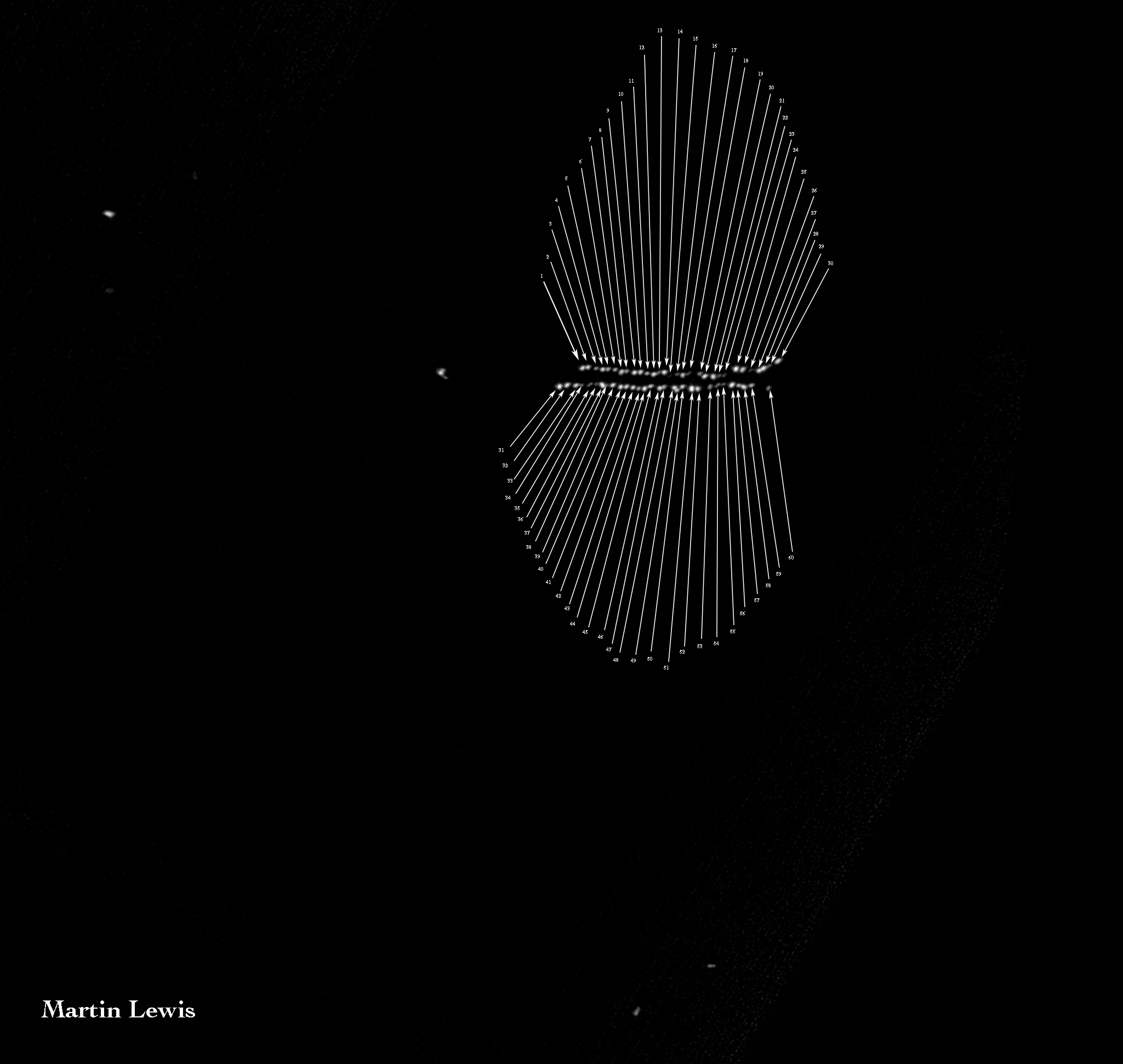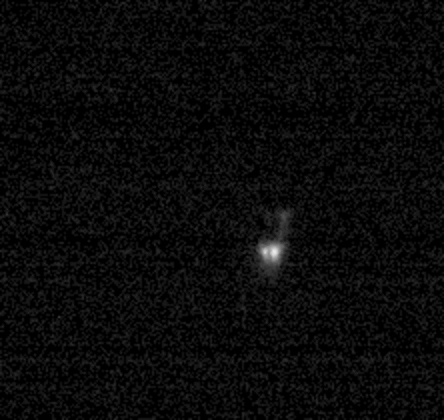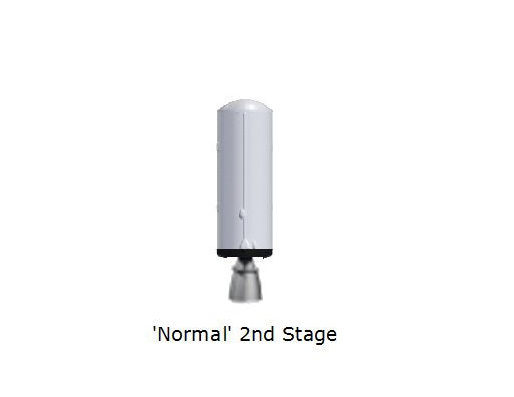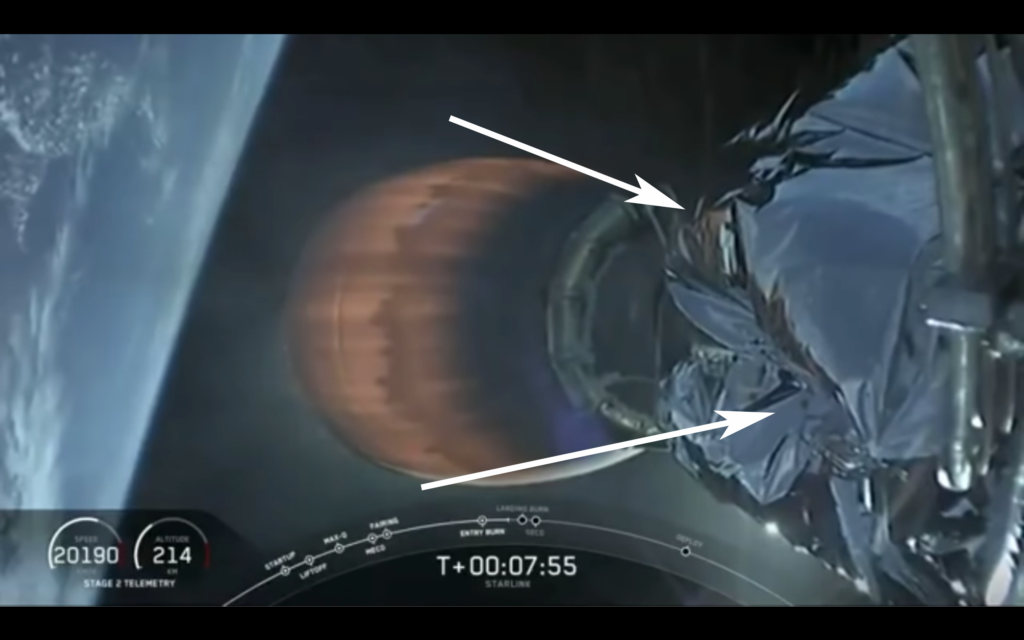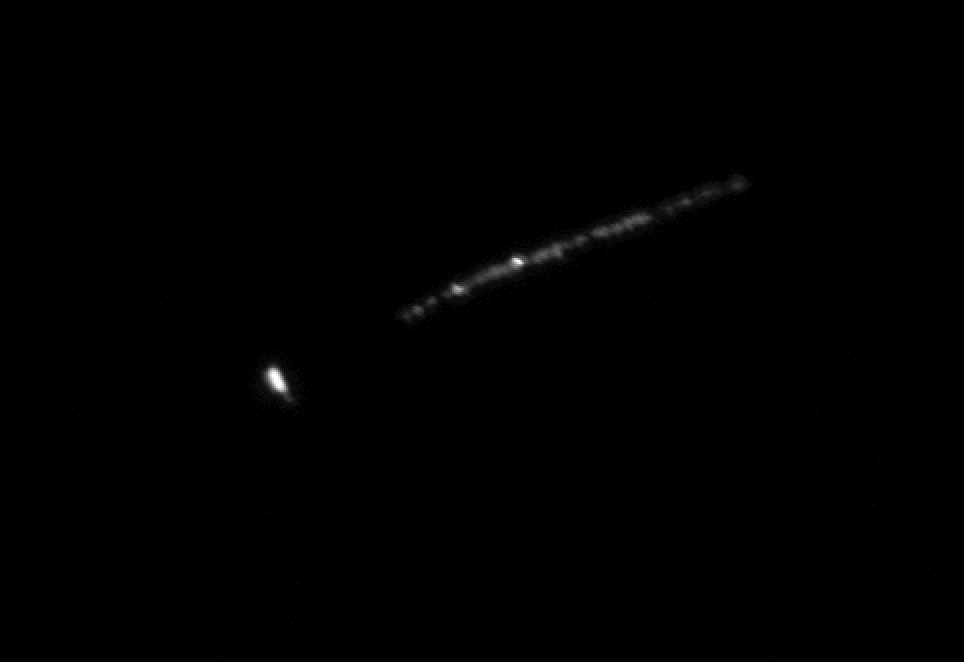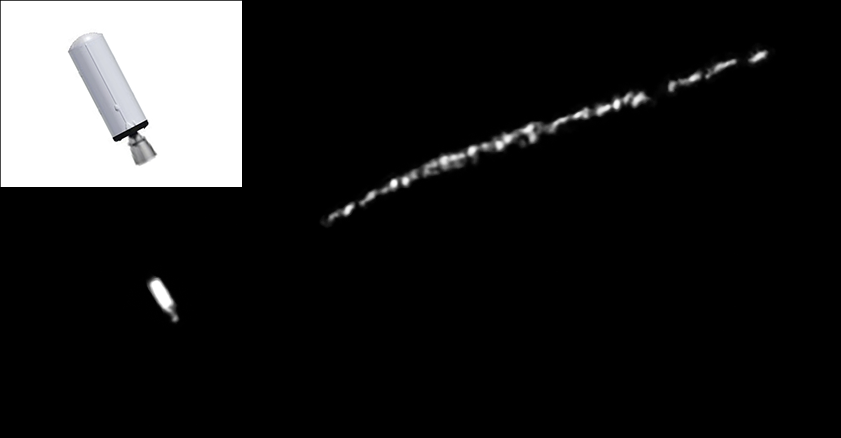SPACEX STARLINK 7 SATELLITES 22 MINUTES AFTER LAUNCH – CLOSE UP PHOTOS
Observation:
1st imaging session: 22.04.2020
2nd imaging session:19.08.2022
19.08.2022
This was my second ever attempt of imaging of a Starlink satellite batch right after launch. This particular event was special for a few reasons. The first is that this wasn’t my first attempt, so I sort of new what I was expecting this the event, what to took for.
Second reason is that since my first attempt I co-founded a hungarian youtube channel where we broadcast live rocket launches.
During the Starlink 4-27 mission I was doing just that, we were live and watched with almost 400 viewers the event. Sadly it was cloudy over most of Hungary, so they couldn’t observe the satellites. Not over London, it was as clear as it could be, heavens were merciful to me once again! The object arrived just in time, T+22 minutes after launch. It was fast as expected, it already had the (first cosmic) speed, but no the altitude (little over 200km above surface). To naked exe still looked as one object, but in reality it was already many. The whole imaging session lasted for about 2mins tops. It was fun once again.
What could I see it and why?
After launch Falcon-9 first and second stage must do their intended job, namely to place the satellites into Low Earth Orbit. Once that is done, at T+15 mins the Starlink satellites separate from second (upper) stage and start separating form each other. SpaceX compared this phase to a deck of cards. Just by the sheer force of the deployment and rotation spreads them. My first observation with Martin Lewis was the first time anyone ever took close up photos of this unfolding event right after satellite deployment.
22.04.2020
My best photos
How the whole story began
(22.04.2020)
This observation was one of the most exciting photographic experience I have ever had in my life. Although not necessary the biggest fan of the whole Starlink constellation, but photographically this was a hard challenge. I am very happy to say mission accomplished!
Starlink 7 was launched at 19:30UT and I knew 22 mins (or so) it will fly above me. I did my preparation as I would do to an ISS imaging session. It went past at around 84 deg. above horizon, was bright as hell and when I looked back the frames….. couldn’t believe my eyes!
So you will see on this photo marked with arrows:
– Falcon-9 2nd stage
– a mysterious object
– rest of the Starlink satellites which only started spreading
Image acquisition:
Usually I use my 10″ for ISS imaging (full equipment details at the bottom). Also do manually track the station, this works for me the best. When I looked up the flyby forecast on Heavens Above website.Then I prepared for the flyby and once I captured a video, I broke it down to individual frames. This way I can sort out and handle each and every frames with ISS on it separately and get rid of the blank frames. For this I usually I use PIPP, a small but powerful software. But this case too many bright object and that confuses the algorithm, so had to do it all manually going trough each frame one by one (hundreds of frames).Once this is done, I keep the ones which aren’t affected by atmospheric disturbance too much.
More videos and animation in this video summary:
EQUIPMENT
Skywatcher 250/1200 Flextube dobsonian telescope
Zwo ASI 174 MM mono camera
TeleVue 2.5x powermate
Zwo Red filter
What we could identify
So luckily it wasn’t only me who photographed the event. I had direct contact with Martin Lewis and Ralf Vandebergh as well and they both successfully managed to take photos.
So the first images I saw was from Ralf Vandebergh. We have already noticed a bright object following the double chain of Starlink satellites, but at this point we all assumed that is the second stage of the Falcon-9 or one of the tension rods.
Let’s see now what we could (hopefully accurately) identify on Martin’s photo.
I am very happy for Martin’s photo, because it beautifully shows not only the details I have captured as well, but details I didn’t manage to capture. During deployment 4 so called tension rods play a significant role. So on his photos all 4 are visible – looking back my data I captured 3 of them, but my processing came out nowhere near as good as Martin’s related to these rods.
We know for certain that tension rods are free after deployment and will decay over the months. On this animation from live webcast we can see a rare moment, when possibly one of the rods appear for a very shot time.
So these are Martin’s photo and mine rotated to the same orientation.
The two captures side by side offers a great comparison of the individual satellites. Satellites’s visibility highly depends on the angle of Sun illuminating the surface and also the camera settings of my own camera, also probably atmospheric conditions could be quality destroying factors too. All in al the overall majority of the double chain is perfectly identical (great relief) except 2 objects marked with circles on the photo above. But no matter how I count all 60 satellites are visible.
Which left me with no clue to identify that object. We were speculating that those might be also Starlink satellites somehow separated from the main bunch. But since all satellites seems to be located in the double chain, also we found the 4 tension rods, there must be a dispenser of some kind in the payload that should be visible.
Finally some assumed evidence
Martin had some time to proceed with the image processing and we narrowed down our focus on that specific object we still did not identify. He found many sharp frames in his own raw video about the double chain, so this is an animation cropped to the chains of satellites and the mysterious object only. If you observe carefully that unidentified object, you can see it has a structure and an elongated shape.
Martin first cropped the object around from the original video and stacked it in Autostakkert (a software widely used for stacking planetary images to enhance details). This is how the object looks after stacking.
Solution (at last)
(30.04.2020)
I bumped into this video from Mr SuperMole on youtube. This shows the event 1 minute after we saw (T+23 minutes) from Poland. Our still mysterious object is close to the chain, exactly where is should be and then it puffed! Then I know that is 100% the second stage, this is the behaviour of the vehicle when preparing for deorbit manoeuvre.
Finally it looks like the whole mysterious object comes to an end. The mysterious object is the Falcon-9 second stage. I know I made some noise around this mysterious object, but there were many things that lead me to the wrong conclusion. Shortly after I shared my first photo of the event, Martin Lewis did his first quick process. On that we saw 60 satellites in two chains, 2 brighter and 4 fainter objects. Now 5 out of that 6 objects looked elongated and the sixth had some weird behaviour throughout the whole event. So I assumed we’ve got 4 tension rods and the second stage, plus something (we assumed at some point that those are Starlink satellites already separated from the double chain).
Then few days ago Martin shared an animation with superb resolution of the double chain of Starlink satellites and now we know the second stage. You can see an elongated object and not just a rod, but it has some level of cylindrical shape, also it is rotating. Below a few photos which I think are clues to this direction – forgive me for the drawing, couldn’t do better…
The very bright area should be the highly reflective cover around the stage engine nozzle. The top fainter bright spots are reflections on the side of the second stage and the front of the vehicle is pointing away from us.
Then I had the idea to take a better look at the second half of the flyby, at least what I could record from it. And that gave the final push, that is clearly one Falcon-9 rocket second stage booster. The bright white body is easily recognisable and the engine nozzle is pointing down toward 5 o’clock. Also there might be a slight flare on the reflective cover.
This also confirmed Martin’s video and the assumed rotation orientation of the vehicle.
Though me about more careful examination of the visible clues. Now it looks obvious, some of you might have told me at some point that this might be the second stage, but based on other clues I totally dismissed the possibility of it. Probably if it is not carrying out the turn around manoeuvre when right above us, the stage could have been more easily recognisable. But I take the blame for the unnecessary noise!
At last the updated version of Martin’s staggering photo.
There were too many objects to photograph at once. Usually when it comes to the International Space Station, I know roughly what is where. Although this was a totally new situation, a huge surprise to capture the event right after the satellite deployment. Now almost all the objects are identified. We still have one which looks identical to the tension rods, but I think think it’s time to leave it there.
On the 3rd of June the next mission lifted off from Florida (Starlink 7 – 8th mission altogether) and finally we have seen a unique footage of the deployment and a tension rod was visible for a few moments too.
